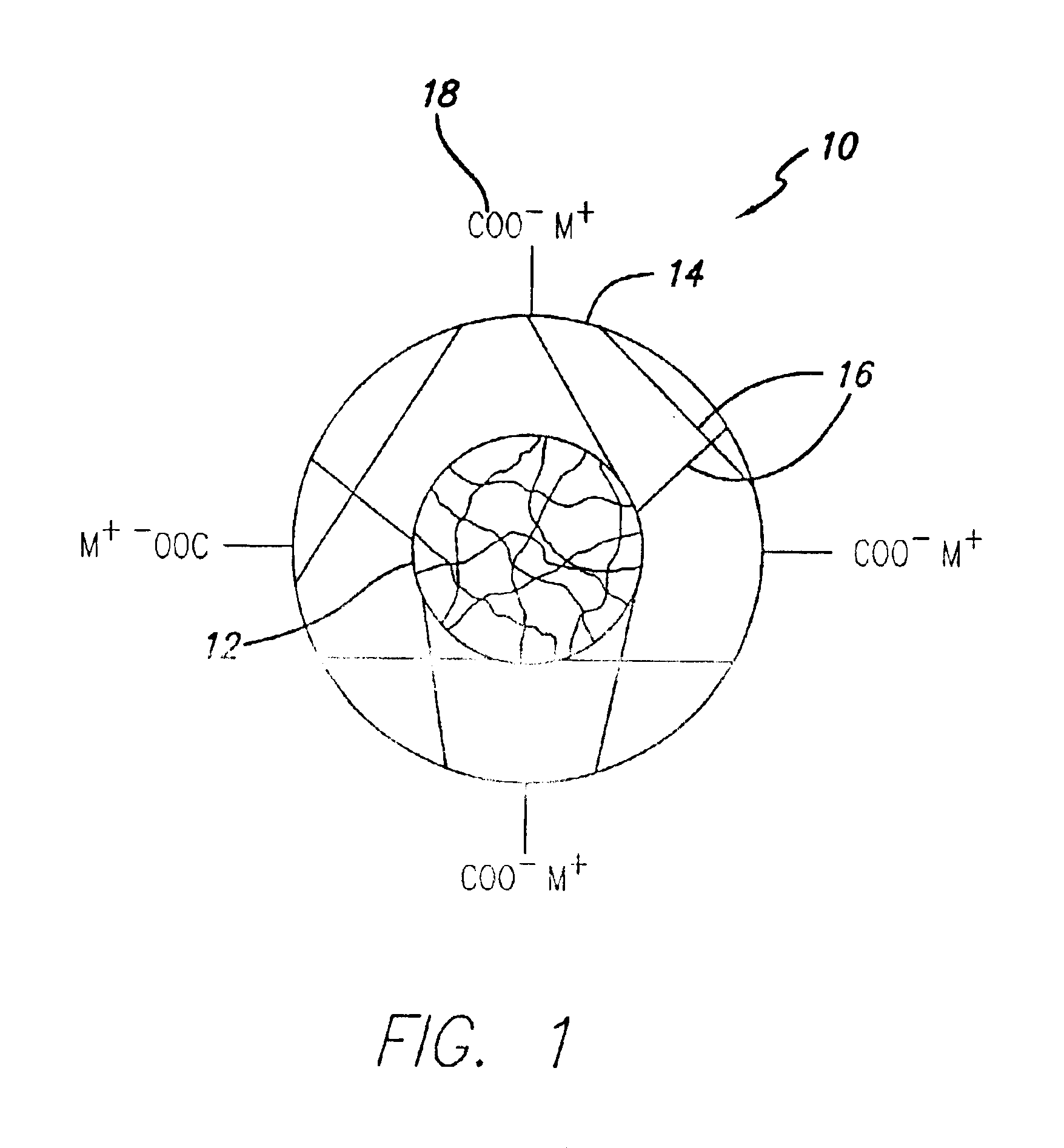Specific core-shell polymer additive for ink-jet inks to improve durability
a core-shell polymer and ink-jet ink technology, applied in the field of core-shell polymers, can solve the problems of poor performance properties, inability to solve all, poor durability of ink-jet inks, etc., and achieve the effects of improving shear stability, excellent storage stability of core-shell polymers, and improving the film-forming properties of both core and shell polymers
- Summary
- Abstract
- Description
- Claims
- Application Information
AI Technical Summary
Benefits of technology
Problems solved by technology
Method used
Image
Examples
example 1
[0047]Methyl methacrylate (17.07 g) and hexyl acrylate (17.07 g) were mixed along with isooctylthioglycolate (0.17 g) in water (11.4 ml). This was emulsified with 30% Rhodafac RS 710 in water (1.63 g). This emulsion was added to water (125 ml) at 90° C. containing potassium persulfate (0.2 g) in a reactor. It was maintained in the reactor at 90° C. for 30 min. At this stage, the particle of this seed or core was found to be 180 nm. Then more potassium persultate (0.1 g) was added. Immediately, another emulsion was prepared with methyl methacrylate (3.33 g), hexyl acrysate (3.33 g), ethylene glycol dimethacrylate (0.17g), methacryloyloxyethyl succinate (1.7 g) and isooctylthioglycolate (0.05 g) in water (2.85 g) containing 30% Rhodafac RS 710 in water (0.5 g) and was added to the reactor. It was maintained at 90° C. for another 1 hr and cooled to ambient temperature. Then it was brought to pH 8.5 by adding sufficient amounts of potassium hydroxide. The particle size was found to be 2...
PUM
| Property | Measurement | Unit |
|---|---|---|
| glass transition temperature | aaaaa | aaaaa |
| thickness | aaaaa | aaaaa |
| thickness | aaaaa | aaaaa |
Abstract
Description
Claims
Application Information
 Login to View More
Login to View More - R&D
- Intellectual Property
- Life Sciences
- Materials
- Tech Scout
- Unparalleled Data Quality
- Higher Quality Content
- 60% Fewer Hallucinations
Browse by: Latest US Patents, China's latest patents, Technical Efficacy Thesaurus, Application Domain, Technology Topic, Popular Technical Reports.
© 2025 PatSnap. All rights reserved.Legal|Privacy policy|Modern Slavery Act Transparency Statement|Sitemap|About US| Contact US: help@patsnap.com


